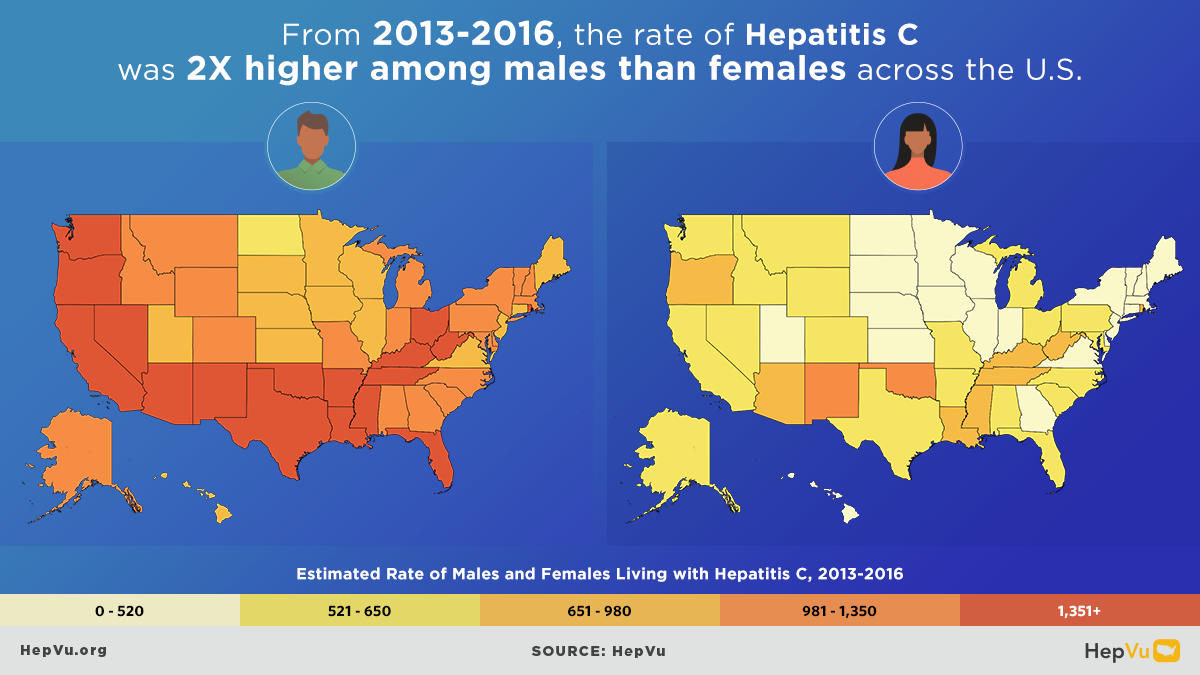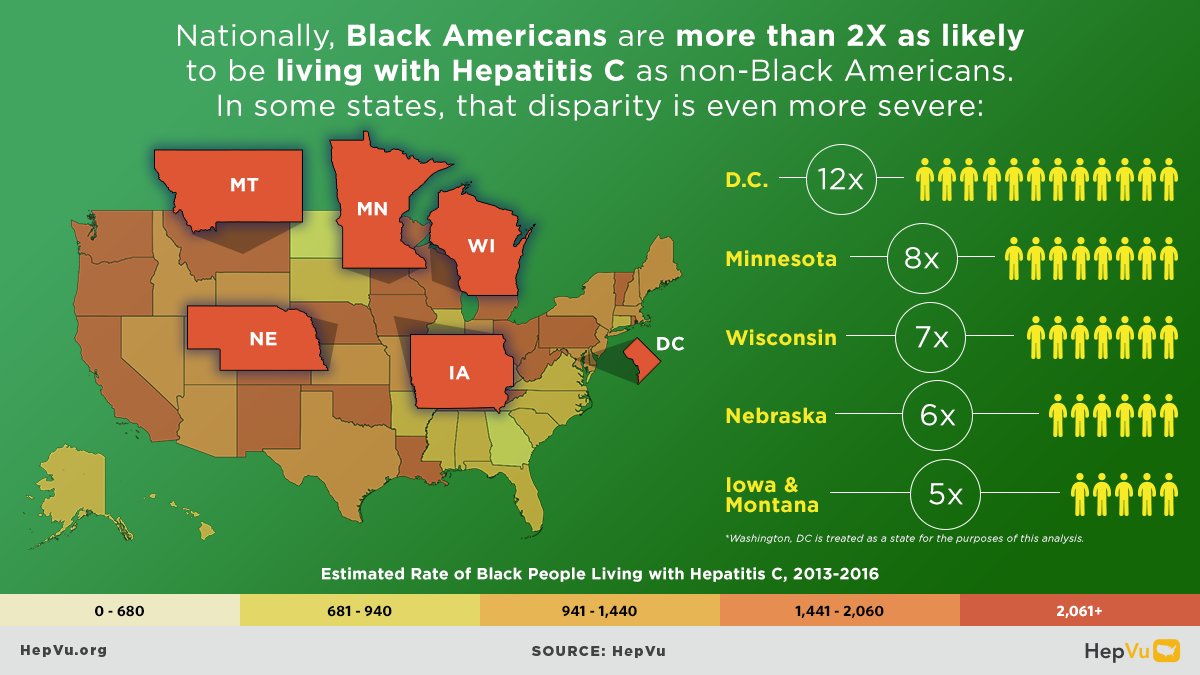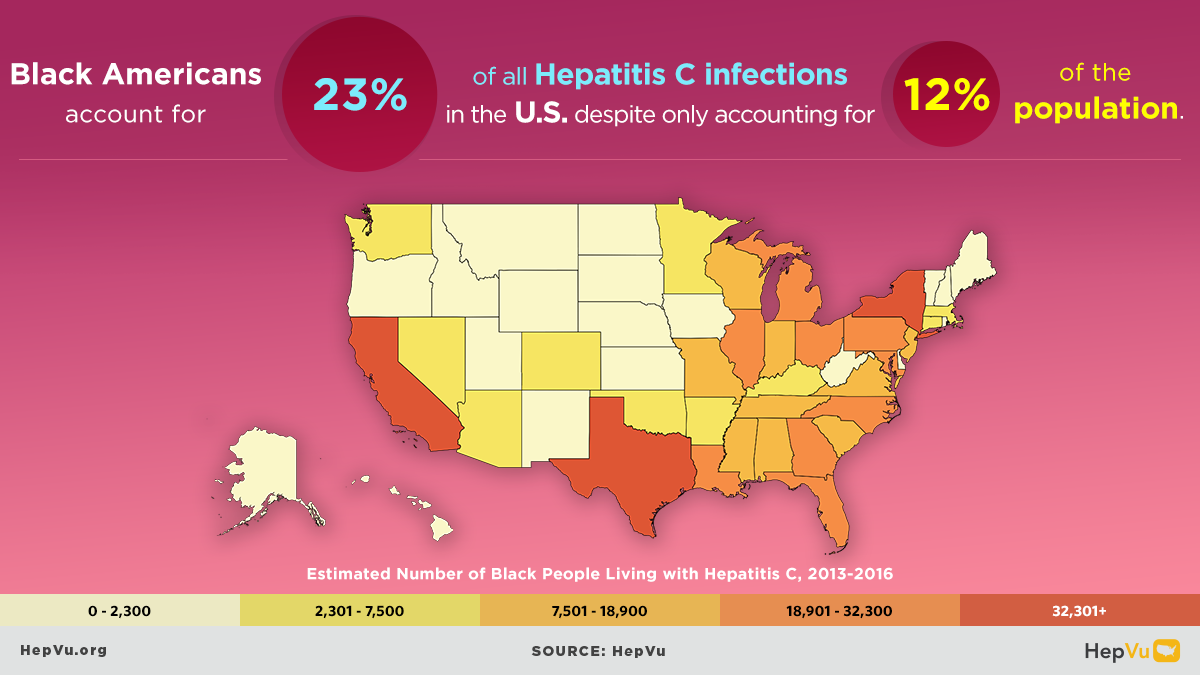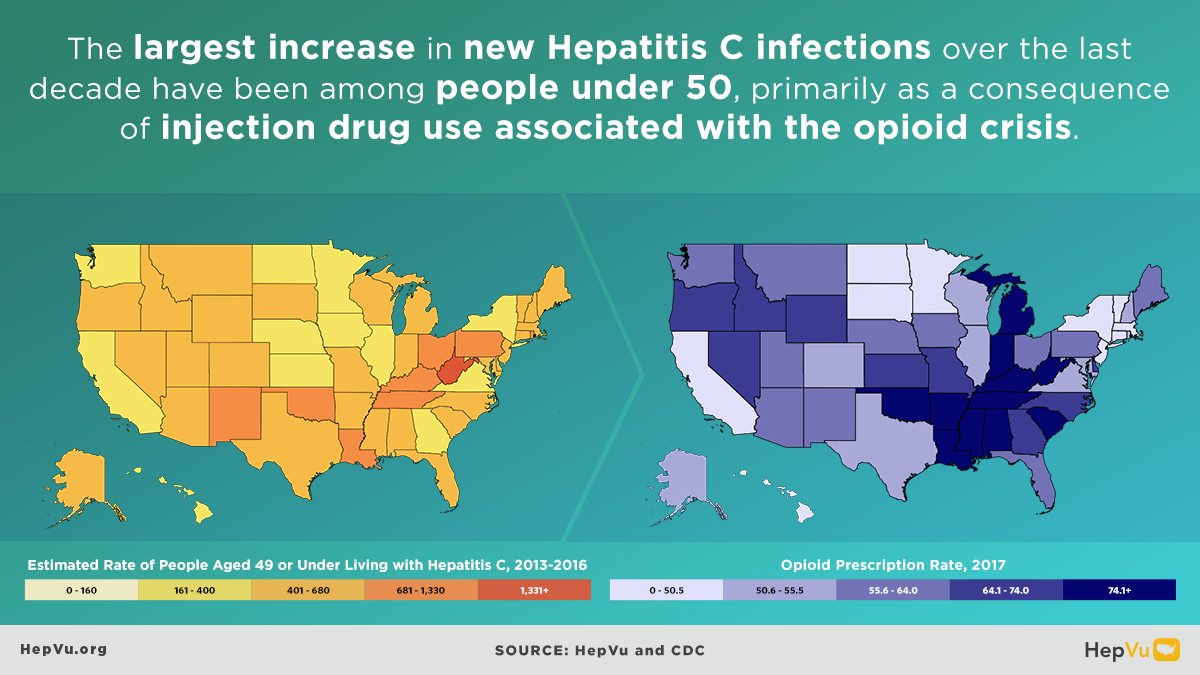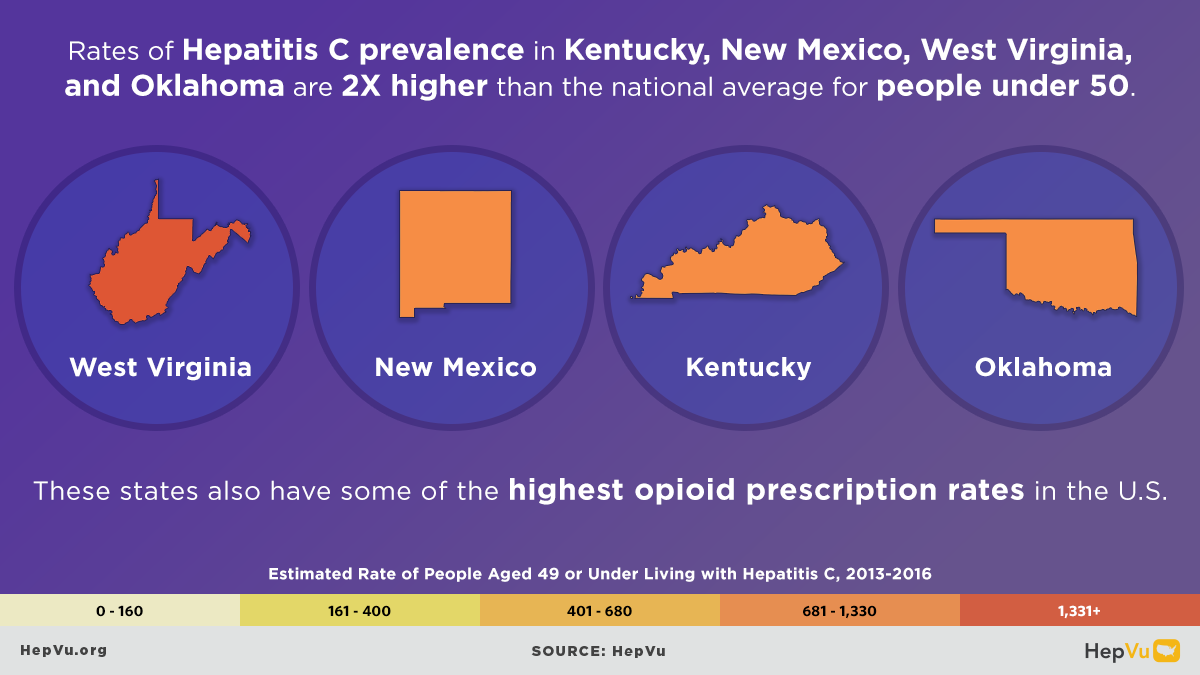ATLANTA, January 15, 2020 – HepVu today launched new interactive maps illustrating the prevalence of Hepatitis C in the United States between 2013 and 2016, stratified at the state level by age, sex, and race. Published in Hepatology Communications, the data demonstrate that of the estimated 2.3 million people living with Hepatitis C infection in the U.S. during this time, the epidemic continues to disproportionately impact males, the Baby Boomer population (those born between 1945 and 1969), Black Americans, and, increasingly, young persons in states highly affected by the opioid epidemic – a result of injection drug use.
“The data highlight health disparities among certain populations and areas of the country and underscore the continuing need for consistent, well-grounded data that can help public health decision-makers develop tailored strategies to address Hepatitis C,” said Patrick Sullivan, PhD, DVM, Professor of Epidemiology at Emory University’s Rollins School of Public Health and Principal Scientist for HepVu. “Knowing there is a cure for Hepatitis C, it is even more critical to use data to identify areas where we should strengthen surveillance, screening, and treatment to stop this epidemic.”
Key findings include:
- There were twice as many Hepatitis C infections among men than among women – a ratio that was consistent in nearly every state. Nationally, the rate of Hepatitis C prevalence was 1.3 percent for males and 0.6 percent for females.
- Hepatitis C prevalence was more than twice as high for Black Americans than for non-Black Americans, at 1.8 percent and 0.8 percent, respectively. Though Black Americans comprised 12 percent of the U.S. population, they represented 23 percent of Hepatitis C infections nationwide.
- 71 percent of infections were among Baby Boomers. Hepatitis C prevalence among Baby Boomers, at 1.6 percent, was three times higher than the prevalence among those born after 1969, at 0.5 percent.
- Younger Americans represent an increasing proportion of new Hepatitis C infections. In certain states, such as Kentucky, New Mexico, West Virginia, and Oklahoma, the Hepatitis C prevalence rate among people born after 1969 was twice as high as the national average for that age group. Kentucky, West Virginia, and Oklahoma also have some of the highest opioid prescription rates in the country – demonstrating the intersection of the growing burden of Hepatitis C among younger adults and the increasing misuse of opioids, as well as the sharing of needles and other equipment used to inject drugs.
“Illustrating disparities in Hepatitis C prevalence is key to understanding high-risk populations and where they reside,” said Heather Bradley, PhD, Assistant Professor of Epidemiology at Georgia State University’s School of Public Health and Project Director for HepVu. “Our research aims to deliver in-depth insights on Hepatitis C across the U.S. and its distribution within states to better inform public health decision-making and resource allocation for monitoring, prevention, and care services.”
HepVu.org is an online platform that visualizes data and disseminates insights on the Hepatitis C epidemic in the United States. HepVu is presented by Emory University’s Rollins School of Public Health in partnership with Gilead Sciences, Inc. In addition to mapping the burden of Hepatitis C at the state-level, HepVu provides users with educational infographics, state-specific factsheets, and downloadable datasets. The platform also visualizes additional data at the state level related to Hepatitis C, including:
- Hepatitis C-related mortality data
- Opioid indicators, including opioid prescription rate, narcotic overdose mortality rate, and pain reliever misuse prevalence
- Social determinants of health, such as high school education and income inequality
The state-level stratified data on HepVu were sourced from the National Health and Nutrition Examination Survey (NHANES), the National Vital Statistics System (NVSS), and external literature, which allowed for estimates of populations not included in NHANES, such as the incarcerated, unsheltered homeless, and nursing home residents. Race data were limited to non-Hispanic Black Americans and persons of other races due to insufficient levels of widespread and publicly available Hepatitis C surveillance data among other populations. Findings were developed by researchers at Georgia State University, Emory University, the Centers for Disease Control and Prevention (CDC), and the University at Albany and published in Hepatology Communications in an article titled, “Hepatitis C virus prevalence in 50 U.S. states and D.C. by sex, birth cohort, and race: 2013–2016.”
The new data are based on the previously published methodology for state-level Hepatitis C prevalence estimates between 2013 and 2016 published in the Journal of the American Medical Association (JAMA) Network Open and released on HepVu in January 2019. The paper, “Prevalence of Hepatitis C Virus Infection, US States and District of Columbia, 2013 – 2016,” was produced by the Emory University Coalition for Applied Modeling for Prevention (CAMP) project with researchers from the University at Albany and developed with CDC.
About HepVu
HepVu is an online platform that visualizes data on the U.S. Hepatitis C epidemic to increase awareness of viral hepatitis and inform public health decision-making. HepVu is a Powered By AIDSVu project presented by Emory University’s Rollins School of Public Health in partnership with Gilead Sciences, Inc. Please visit www.HepVu.org to learn more.
About Georgia State University
With seven campuses throughout metro Atlanta, the university provides its world-class faculty and more than 53,000 students with unsurpassed connections to the opportunities available in one of the 21st century’s great global cities. A national leader in graduating students from diverse backgrounds, Georgia State provides a rich experience with award-winning housing, hundreds of student clubs and organizations, and one of the most diverse student bodies in the country. Students, faculty and alumni enjoy a unique campus personality and culture based on ambition, hard work, dedication and perseverance.
About Emory University
Emory University is known for its demanding academics, outstanding undergraduate experience, highly ranked professional schools, and state-of-the-art research facilities. Emory encompasses nine academic divisions as well as The Michael C. Carlos Museum, The Carter Center, the Yerkes National Primate Research Center, and Emory Healthcare, Georgia’s largest and most comprehensive health care system.
About the University at Albany
A comprehensive public research university, the University at Albany-SUNY offers more than 120 undergraduate majors and minors and 125 master’s, doctoral, and graduate certificate programs. UAlbany is a leader among all New York State colleges and universities in such diverse fields as atmospheric and environmental sciences, public health, business, criminal justice, emergency preparedness, engineering and applied sciences, informatics, public administration, social welfare, and sociology taught by an extensive roster of faculty experts. It also offers expanded academic and research opportunities for students through an affiliation with Albany Law School. With a curriculum enhanced by 600 study-abroad opportunities, UAlbany launches great careers.

